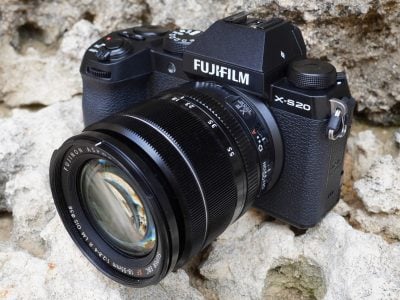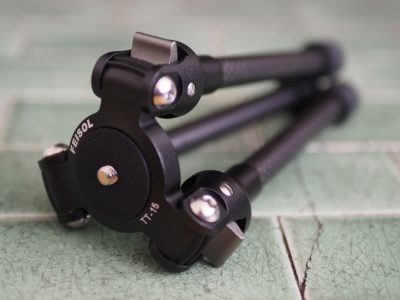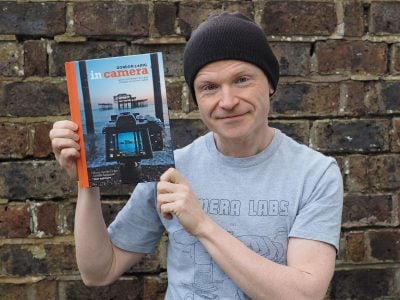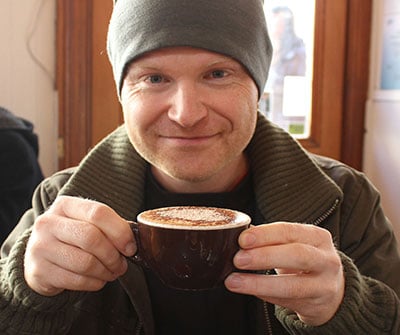Nikon COOLPIX AW130 review
-
-
Written by Ken McMahon
Quality
Nikon COOLPIX AW130 vs Olympus TOUGH TG4 vs TOUGH TG860 quality
To compare real-life performance, I shot this scene with the Nikon COOLPIX AW130, the Olympus Stylus TOUGH TG4, and the Olympus Stylus TOUGH TG860 within a few moments of each other, using their best quality JPEG settings and at their base sensitivity settings. For this test the cameras were mounted on a tripod and image stabilisation was disabled. The cameras were zoomed in to provide the same field of view, the ISO sensitivity was manually set to the lowest available setting and Auto mode was selected for the exposure. All other settings were left on the defaults.
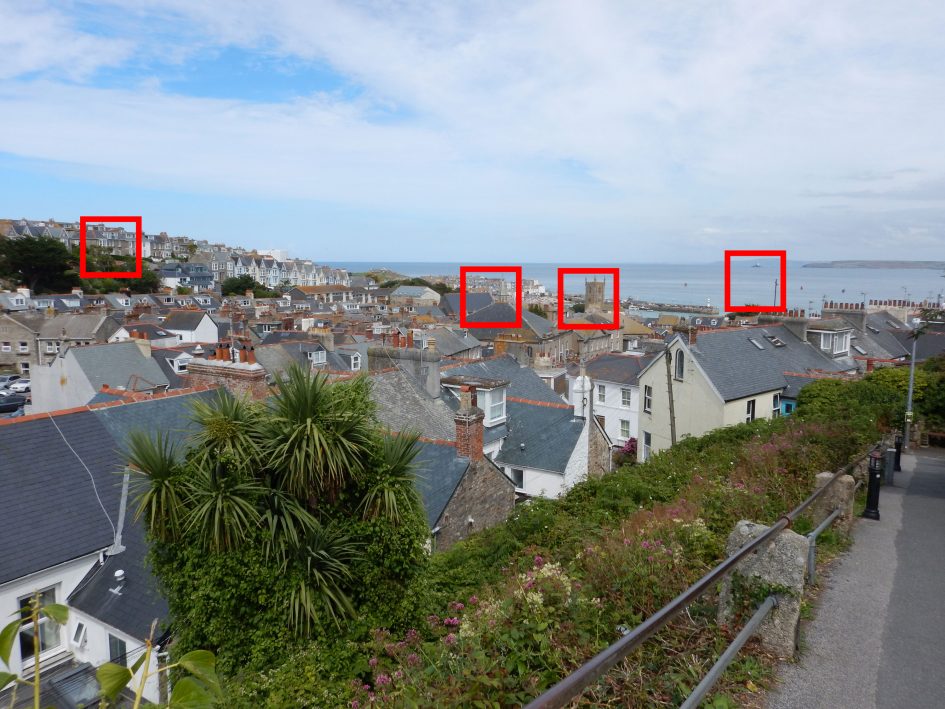
The first crop from the COOLPIX AW130 looks a little blurry, but crops from the edge of the frame aren’t always indicative of overall quality and things usually improve towards the centre, so let’s not rush to judgement. As well as the slightly furry window frames and fascia boards on the houses, the foliage in the foreground also looks a bit dense and lacking in detail.
The second crop is from closer to the middle of the frame, but there’s still not as much detail here as there could be. There’s some detail in the windows of the church tower, but the stonework and the clock look quite coarse. It’s also hard to make out much detail in the roofs in the foreground.
The lighthouse in the third crop looks a little blocky as do the chimneys and roofs in the final crop from closer to the right edge of the frame. So overall a bit of a disappointing result from the COOLPIX AW130. That said, it’s always a good idea to bear in mind you’re unlikely to notice these shortcomings other than at or close to 100 percent sizes.
There’s a lot more detail in the Olympus TOUGH TG4 crops though, compare the foreground foliage in the first crop, the church tower and the tiled roof on the right side of the second crop and you’ll see it quite clearly. The lighthouse is also more distinctly rendered and there’s a little more detail in the roofs on the final crop. To be fair, it’s in the middle of the frame that the difference really stands out, at the edges there’s not so much in it. The TOUGH TG860 crops are also more detailed than those from the COOLPIX AW130, though the margin of difference isn’t quite so wide.

Above left: Nikon COOLPIX AW130 at 4.7mm (26mm equivalent) f4.1, 125 ISO. Above center:Olympus TOUGH TG-4 at 4.5mm (25mm equivalent) f8, 100 ISO. Above right: Olympus TOUGH TG-860 at 4.7mm (26mm equivalent) f4.3, 125 ISO.

Above left: Nikon COOLPIX AW130 at 4.7mm (26mm equivalent) f4.1, 125 ISO. Above center:Olympus TOUGH TG-4 at 4.5mm (25mm equivalent) f8, 100 ISO. Above right: Olympus TOUGH TG-860 at 4.7mm (26mm equivalent) f4.3, 125 ISO.

Above left: Nikon COOLPIX AW130 at 4.7mm (26mm equivalent) f4.1, 125 ISO. Above center:Olympus TOUGH TG-4 at 4.5mm (25mm equivalent) f8, 100 ISO. Above right: Olympus TOUGH TG-860 at 4.7mm (26mm equivalent) f4.3, 125 ISO.

Above left: Nikon COOLPIX AW130 at 4.7mm (26mm equivalent) f4.1, 125 ISO. Above center:Olympus TOUGH TG-4 at 4.5mm (25mm equivalent) f8, 100 ISO. Above right: Olympus TOUGH TG-860 at 4.7mm (26mm equivalent) f4.3, 125 ISO.
Nikon COOLPIX AW130 vs Olympus TOUGH TG4 vs TOUGH TG860 noise results
To compare noise levels under real-life conditions, I shot this scene with the Nikon COOLPIX AW130, the Olympus Stylus TOUGH TG4, and the Olympus Stylus TOUGH TG860 within a few moments of each other at each of their ISO settings. All three cameras were set to their best quality JPEG modes and mounted on a tripod and stabilisation was disabled. Shadow Adjust was turned off on the TG860 and TG4, but otherwise the cameras were left on their default settings.
The cameras were zoomed in to provide the same field of view, the ISO sensitivity was manually set to the lowest available setting and Program Auto mode was selected for the exposure.
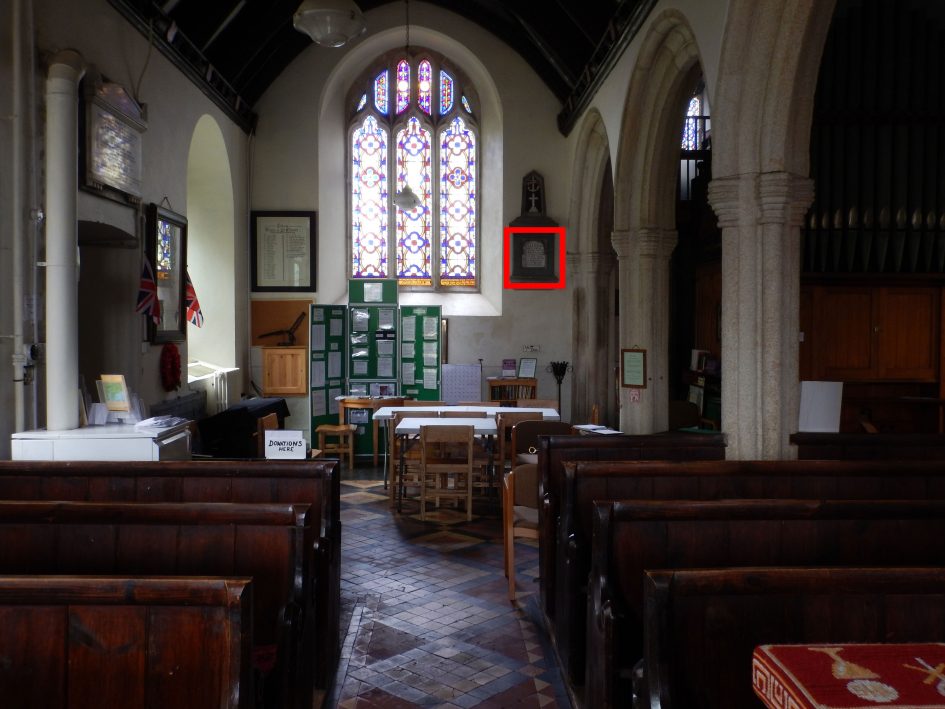
Set to its base 125 ISO sensitivity the COOLPIX AW130 selected and exposure of 1/6 at f4.2. The TOUGH TG4 metered 1/8 at f2.3 at 100 ISO and at 125 ISO the TOUGH TG860 selected an exposure of 1/4 at f4.7. The crops below are selected from the area marked in red above.
There’s not much noise visible in the crop from the COOLPIX AW130 at its base 125 ISO sensitivity setting, but you can just see some texture in the background wall as well as the memorial panel. At 200 ISO there’s no mistaking it. But rather than the usual salt and pepper graininess you associate with noise, there’s a clumping of the detail and the text is a tiny bit smeared. I think the AW130’s noise suppression is working quite hard even at these relatively low ISO sensitivity settings.
At the 400 and 800 ISO settings things get progressivley smoother and blockier, you can’t read the text on the 800 ISO crop, but up until this point the AW130 does a pretty good job of keeping the noise textures at bay. By 1600 ISO though, it’s a bit of a lost cause and, as well as the suppression artifacts, there’s now a lot of graininess as well. That said, 1600 ISO looks perfectly fine at smaller sizes than the 100 percent crops we’re examining here.
The 3200 and 6400 ISO crops are more noise than image detail. It’s great to be able to shoot in very low light conditions using these settings, just don’t expect too much in terms of the quality of the results.
There’s a difference in the quality of the noise in the TOUGH TG4 and TG860 crops. It looks like the Olympus models apply less aggressive noise supression. The result is grainier crops with slightly better fine image detail at the lower ISO settings. Once you move up the sensitivity range, though, things look different, though not necessarily better.
One final thing to note is that with its bright f2 aperture at the wide angle setting, all other things being equal, you’ll be able to shoot at lower ISO sensitivity settings with the TOUGH TG4, further adding to its low noise advantage. You could, for example, set 100 ISO on the TOUGH TG4 where you’d need 200 ISO on the COOLPIX AW130 if both were using their maximum aperture setting. The other thing to bear in mind is that the TG860 and AW130 set the aperture automatically in this case to f4.7 and f4.2 respectively, whereas the TOUGH TG4’s Aperture priority mode gives you the opportunity to open it all the way up to f2.

Above left: Nikon COOLPIX AW130 100 ISO not available. Above center: Olympus TOUGH TG4 at 100 ISO. Above right: Olympus TOUGH TG860 100 ISO not available.

Above left: Nikon COOLPIX AW130 at 125 ISO. Above center: Olympus TOUGH TG4 125 ISO not available. Above right: Olympus TOUGH TG860 at 125 ISO.

Above left: Nikon COOLPIX AW130 at 200 ISO. Above center: Olympus TOUGH TG4 at 200 ISO. Above right: Olympus TOUGH TG860 at 200 ISO.

Above left: Nikon COOLPIX AW130 at 400 ISO. Above center: Olympus TOUGH TG4 at 400 ISO. Above right: Olympus TOUGH TG860 at 400 ISO.

Above left: Nikon COOLPIX AW130 at 800 ISO. Above center: Olympus TOUGH TG4 at 800 ISO. Above right: Olympus TOUGH TG860 at 800 ISO.

Above left: Nikon COOLPIX AW130 at 1600 ISO. Above center: Olympus TOUGH TG4 at 1600 ISO. Above right: Olympus TOUGH TG860 at 1600 ISO.

Above left: Nikon COOLPIX AW130 at 3200 ISO. Above center: Olympus TOUGH TG4 at 3200 ISO. Above right: Olympus TOUGH TG860 at 3200 ISO.

Above left: Nikon COOLPIX AW130 at 6400 ISO. Above center: Olympus TOUGH TG4 at 6400 ISO. Above right: Olympus TOUGH TG860 at 6400 ISO.
